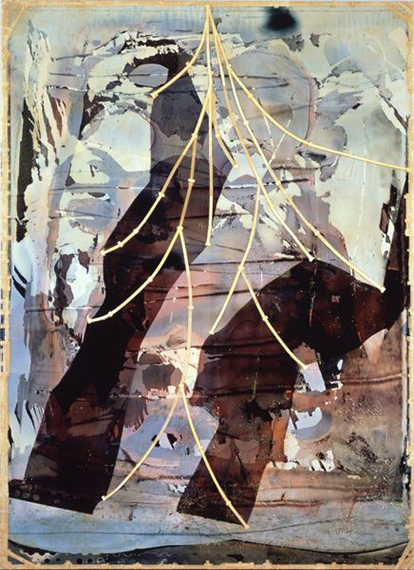
– 90 photograph,
cloth adhesive tape, plastic resin on wooden panel
250.8 x 180.8 x 7.3 cm
© Shinro Ohtake
Träumerei
Leiko Ikemura » Robert Mapplethorpe » Yasumasa Morimura » Yoshitomo Nara » Kohei Nawa » Shinro Ohtake » Cindy Sherman » Francesca Woodman » Miwa Yanagi » Tadanori Yokoo » & others
Exhibition: 12 Jul 2025 – 12 Jan 2026
Hara Museum of Contemporary Art
4-7-25 Kitashinagawa, Shinagawa-ku
140-0001 Tokyo
+81-3-
We dream not only when we sleep, but also when we are awake or even while taking a walk. Our perception of things—colors, sounds, weight, temperature—can vary greatly despite the general consensus on their existence. For someone to whom something good happens, the world seems brighter. To another who is sad, the sound of nearby voices seem far away. The mutual effects that feelings and our senses have on each other cannot be denied, but like dreams, they can be vague and elusive and thus hard to convey.
Dreaming is not exclusive to the realm of sleep. It is the state one falls into when captivated by a beautiful landscape or melody, or when immersed in a novel, movie or play. For us who travel seamlessly between the worlds of digital screens and of flesh and blood, the distinction between “real” and “non-real” may no longer make sense. "Reality" has no objective existence; rather, it is what our senses 'confirm' to be real. Reality might likened to a continuous stream of dreams that are unveiled to as we go along.
Many attempts have been made by artists to express the elusive, resulting in new ways of seeing. At the museum, it is the role of the curator to awaken artworks slumbering in storage. But what dreams or "tr umerei” they inspire are ultimately up to the individual viewer. Hopes, ideals, illusions, the unconscious, sleep: these are the keywords that lie behind this exhibition and its attempt to throw light on artworks through the multifaceted, enigmatic and yet familiar phenomenon of "dreams" and "dreaming."
What is "Träumerei"?
It is a German word meaning "dreamlike" or "dreamy.” It is a word strongly associated with the piano composition of the same name by the Romantic composer Robert Schumann, the seventh in the collection Scenes from Childhood, which was famously inspired by the memory of a letter from his lover in which she described him as being "child-like.” The essence of the word is conveyed within the work's gently repetitive, slowly ambulating melody, like a light that gently falls from the sky, the feeling of longing in the heart, a moment of hesitation or the soaring feeling of aspiration.